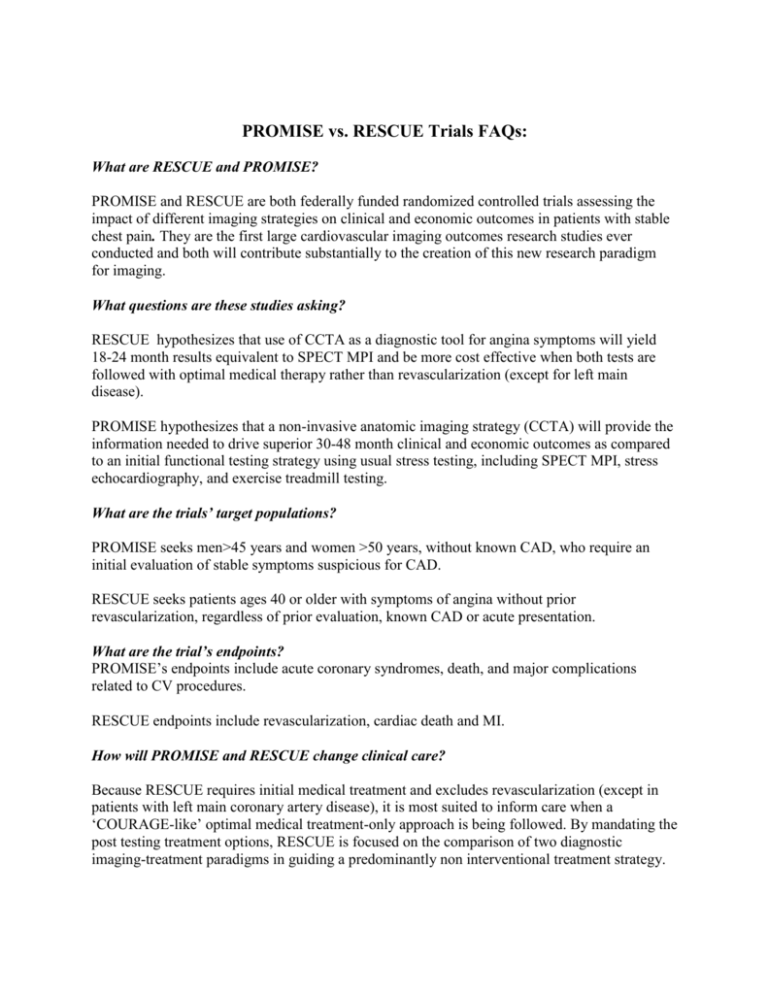FAQs - ACRIN
advertisement

PROMISE vs. RESCUE Trials FAQs: What are RESCUE and PROMISE? PROMISE and RESCUE are both federally funded randomized controlled trials assessing the impact of different imaging strategies on clinical and economic outcomes in patients with stable chest pain. They are the first large cardiovascular imaging outcomes research studies ever conducted and both will contribute substantially to the creation of this new research paradigm for imaging. What questions are these studies asking? RESCUE hypothesizes that use of CCTA as a diagnostic tool for angina symptoms will yield 18-24 month results equivalent to SPECT MPI and be more cost effective when both tests are followed with optimal medical therapy rather than revascularization (except for left main disease). PROMISE hypothesizes that a non-invasive anatomic imaging strategy (CCTA) will provide the information needed to drive superior 30-48 month clinical and economic outcomes as compared to an initial functional testing strategy using usual stress testing, including SPECT MPI, stress echocardiography, and exercise treadmill testing. What are the trials’ target populations? PROMISE seeks men>45 years and women >50 years, without known CAD, who require an initial evaluation of stable symptoms suspicious for CAD. RESCUE seeks patients ages 40 or older with symptoms of angina without prior revascularization, regardless of prior evaluation, known CAD or acute presentation. What are the trial’s endpoints? PROMISE’s endpoints include acute coronary syndromes, death, and major complications related to CV procedures. RESCUE endpoints include revascularization, cardiac death and MI. How will PROMISE and RESCUE change clinical care? Because RESCUE requires initial medical treatment and excludes revascularization (except in patients with left main coronary artery disease), it is most suited to inform care when a ‘COURAGE-like’ optimal medical treatment-only approach is being followed. By mandating the post testing treatment options, RESCUE is focused on the comparison of two diagnostic imaging-treatment paradigms in guiding a predominantly non interventional treatment strategy. On the other hand, because PROMISE does not place any restrictions on additional testing, medical treatment or revascularization after the initial study, it is most suited to inform situations in which usual care is offered to patients with symptoms suggestive of CAD, including PCI and CABG. Both PROMISE and RESCUE are specifically designed to address payer requirements for proving superior outcomes from new technology over usual care before providing reimbursement for CTA. Can my site participate in both? Because the study populations overlap significantly, few sites will be able to meet enrollment targets in both studies. Sites that wish to participate in both trials should provide a detailed, written plan to both trials as to how they will manage to meet enrollment targets.




